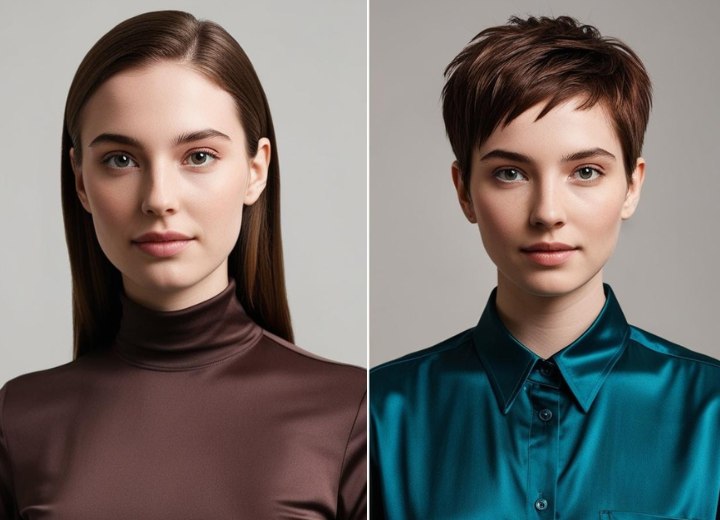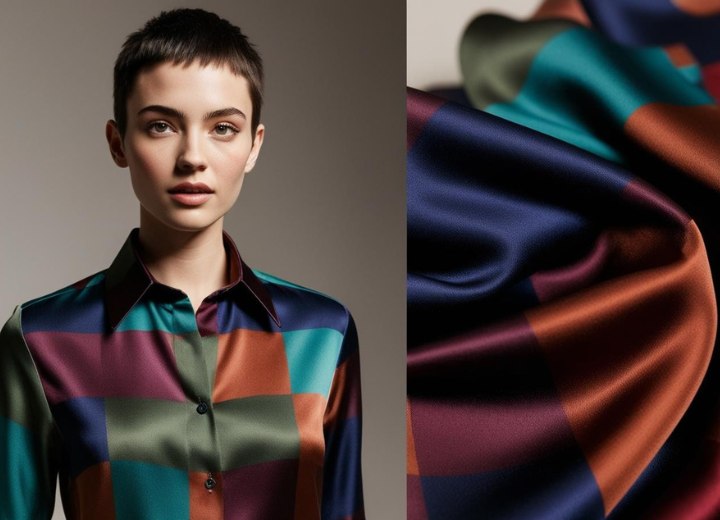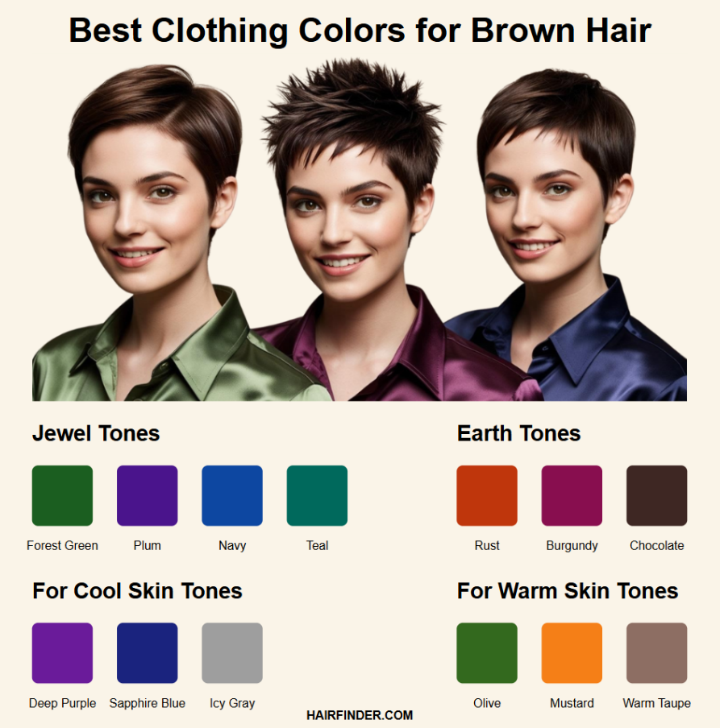Clothing Colors for a Hair Presentation

Let’s start with color. Brown hair is incredibly versatile and works beautifully with a range of hues, but certain tones tend to bring out its richness and dimension more effectively than others. Deep, saturated jewel tones - such as forest green, plum, navy, and teal - tend to complement brown hair very well. These colors offer just the right amount of contrast, drawing attention to the face and hair without overpowering them. Rich earth tones like rust, burgundy, and chocolate can also enhance the warmth in brown hair, especially if her skin tone has golden or olive undertones.
If your model’s skin tone is cooler (with pink or blue undertones), colors like deep purples, sapphire blue, and icy grays can help bring balance and contrast. If her skin tone is warmer, think about shades like olive, mustard, or warm taupe, which create harmony and warmth in the overall look.

If you're going for a more structured or professional look, a crisp collared shirt can also work well, especially if the shirt’s style echoes the shape or edge of the haircut. However, try to avoid turtlenecks, as they can add unnecessary bulk and may visually "cut off" the neck, distracting from the haircut’s shape.
Solid colors are almost always a better choice than patterns in a setting like this. Patterns can be distracting and pull attention away from your work. Likewise, steer clear of busy prints, logos, or metallic embellishments. You want the focus to be entirely on the haircut, not the outfit.
Here are a few additional tips to make sure your model presents the haircut in the best possible light:
• Accessories should be kept minimal. A small pair of stud earrings or delicate hoops is fine, but avoid large or flashy jewelry, especially around the neck and ears. Those areas are where the haircut will be most visible.
• Makeup can tie everything together. If your model wears makeup, opt for shades that complement both her outfit and hair color. A coordinated makeup look can help the entire presentation feel polished and intentional.
• Consider layering carefully. If your model wears a blazer or jacket, make sure it adds to the look without covering too much. A tailored jacket in a complementary tone can create a chic, elevated effect without drawing focus away from the hair.
• Fabric texture matters. Matte fabrics are typically safest, but if you want a bit of visual interest, sheen can add depth without being distracting.

By planning the wardrobe with the same care and creativity you put into the haircut itself, you'll ensure that the overall presentation looks cohesive and professional, and that your hard work really stands out to the judges.
©Hairfinder.com
See also:
Hairdressing schools
Talents and skills to become a good hairdresser